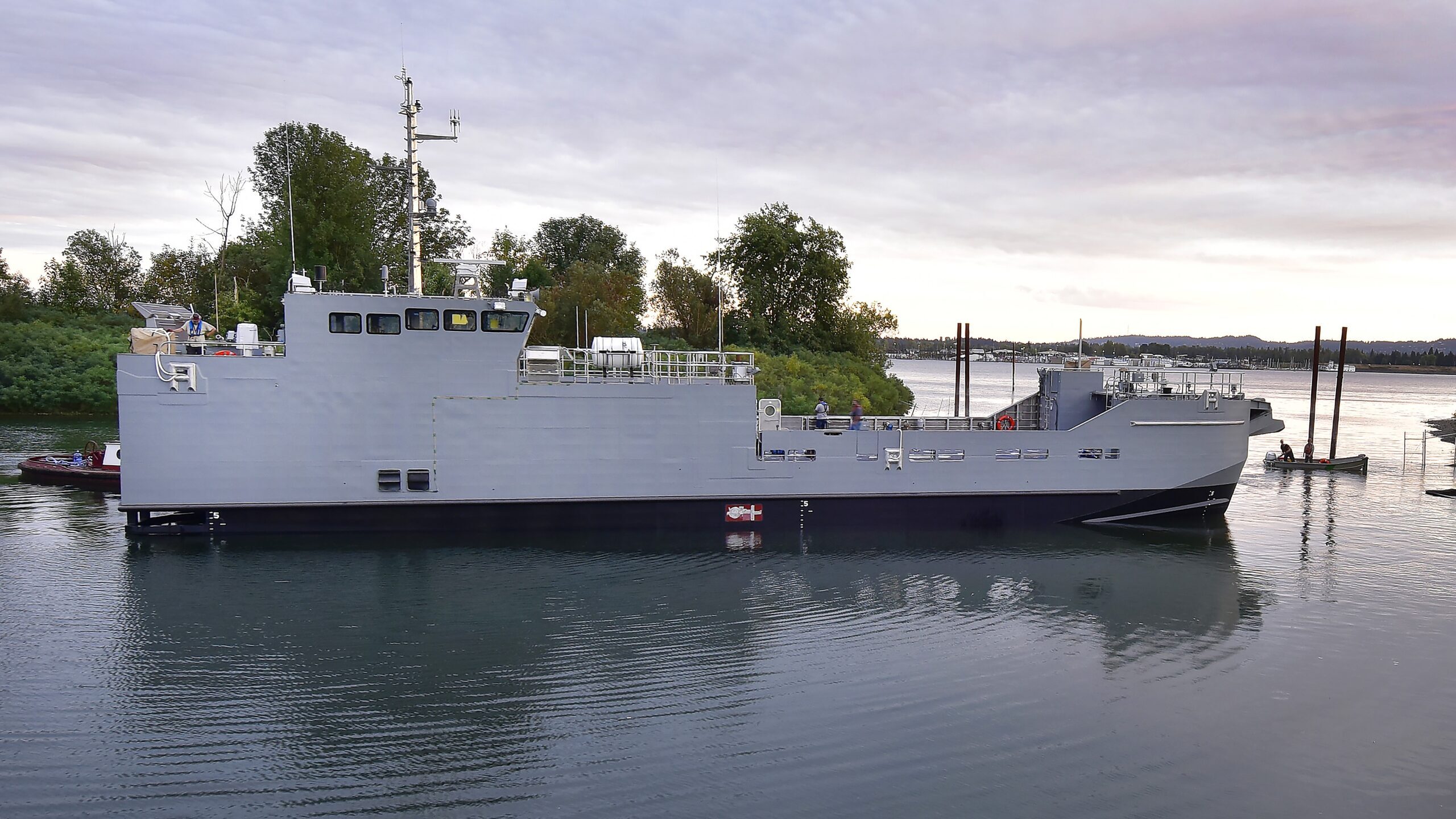
The US Army is rebaselining its MSV-Light program and awaiting approval to launch an MSV-Heavy competition. (Vigor, LLC)
Columbus, Ohio — US Army plans to field two new watercraft variants to ferry troops and equipment around in the Indo-Pacific region are taking shape with a possible upcoming prototyping competition for a heavy vessel and a program “rebaseline” of the service’s lighter vessel, according to service officials.
Under the Maneuver Support Vessel initiative, the Army is testing out a new light (MSV-L) watercraft to replace the Vietnam-era Landing Craft Mechanized-8 (LCM-8) and has now drawn up tentative requirements for a larger, heavy fleet (MSV-H), according to Brig. Gen Samuel Peterson, the program executive officer for Combat Support & Combat Service Support.
“We’ve worked very hard to make sure we understand what it is the Army needs for this type of capability, partnered with our Navy and Marine Corps partners as well, to make sure that we’ve got the right requirement going forward, and we are on the cusp of taking those recommendations forward,” the one-star general said today at a National Defense Industrial Association conference. He noted that the Army’s acquisition head will be briefed on this plan next week.
Wolfgang Petermann, the project manager for transportation systems within the PEO CS&CSS, later told reporters that that vessel may be up to 400 feet in length, reach a speed of 18 knots while carrying up to 175 soldiers and their equipment payloads right up to shore.
RELATED: Inside the Marine Corps’ project to automate the journey through key ‘last mile’
If senior leaders greenlight the program in the coming weeks, Petermann said the service plans to issue a white paper between July and September this year. Then, based on feedback, in early 2024 it will select three shipyards to participate in a virtual prototyping competition similar to the Optionally Manned Fighting Vehicle program.
“[We want to] keep that competitive pressure as long as we can,” Petermann added.
Throughout the design process, the service will work with the shipyards on evolving requirements and eventually make a final downselect in time for the winning team to begin “bending metal” in 2028. The ultimate goal is to have the first vessel launched in 2030, before the program reaches the initial operational capability (IOC) benchmark in 2031.
As Army leaders finalize MSV-H plans, they are also poised to make a low-rate production decision on the smaller 117-foot RSV-L program in the coming weeks, according to Petermann. However, that decision comes as the service rebaselines the program to address design changes and cost increases.
Vigor, LLC, a marine fabrication facility in Vancouver, secured the 10-year contract for the MSV-L development and the production of up to 36 of the new watercraft in 2017. By late 2022, the service began builder trials with the new vessel, an effort that will run through late March. However, program officials have already determined that Vigor will need to make changes.
“The boat was incentivized for speed, which they’ve achieved, but also as a result of that we [need] reinforcements in the design to withstand the G-forces. That, in turn, drove more complexity in the build process,” Petermann explained. This has, in part, increased the vessel’s cost (a point still under negotiation) and led the Army to rebasline the program.
A new schedule has not been finalized yet, but Petermann said there should only be a delay in testing and the Army wants to maintain its first unit equipped date in 2027, with IOC in 2028.






















